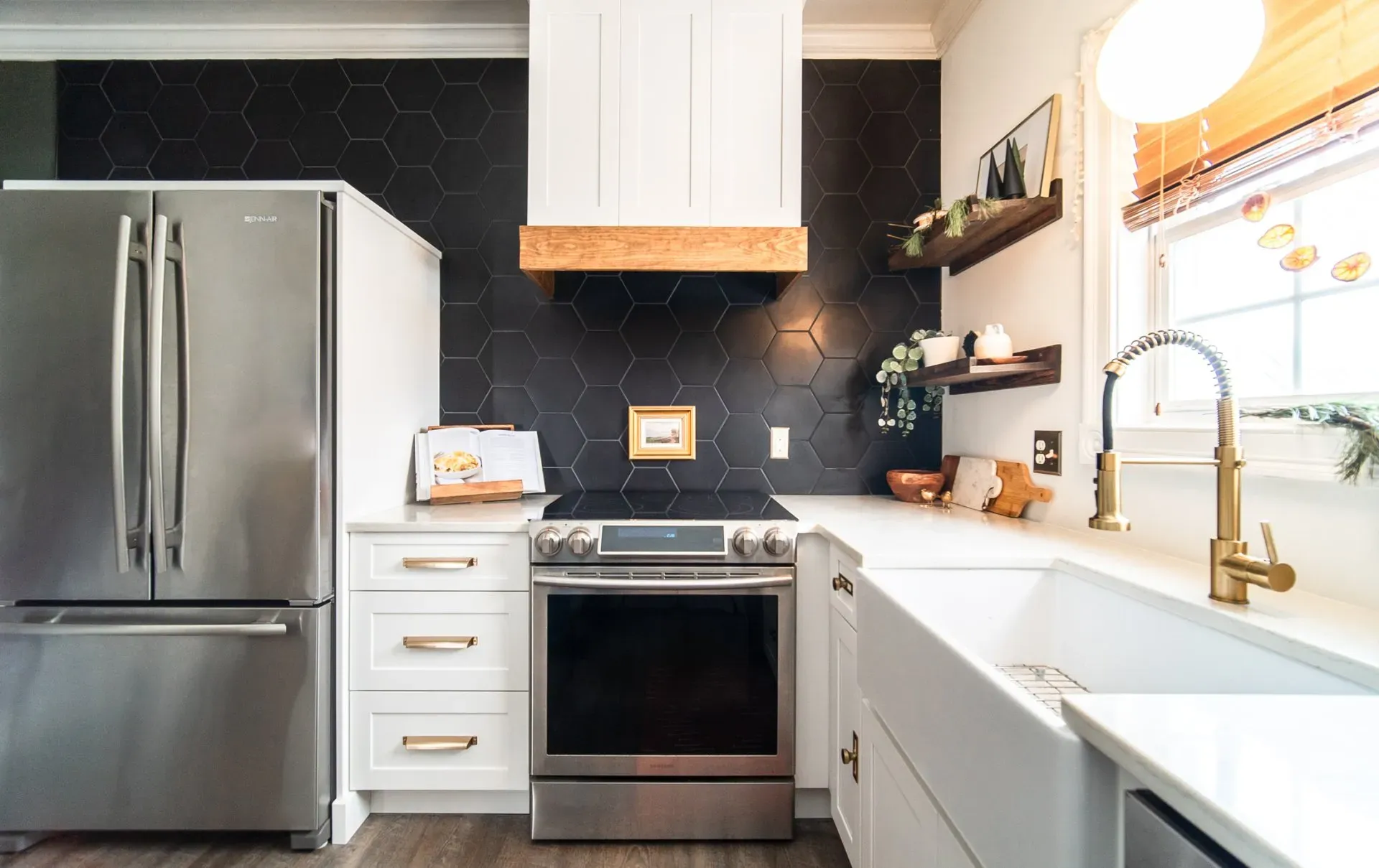Obviously the door style and finish you choose will set the tone for your entire kitchen. Here are some of the basics to keep in mind.
Door Types
Inset Doors:
Most cabinets built in the early 1900's had inset doors. Small hinges are mounted right on the face frame or just inside of it. Usually the hinges are visible when the door is shut. The face of the door is therefore on the same plane as the leading edge of the cabinets. Some drawbacks are that it's more difficult to access the inside of the cabinet, and due to the small space between the door and the frame, the hinges must be adjusted regularly to avoid rubbing.
Partial Overlay Doors:
Partial overlay doors and drawers are mounted right over the face of the box in order to cover the opening completely and partially cover the face frame. Although this makes it possible to install more functional hardware, the face frame will still slightly reduce the amount of accessible space in the cabinets.
Full Overly Euro Style Doors:
This is the modern version of the overlay. The door completely covers the cabinet frame and therefore the whole cabinet. This allows you to take advantage of all the space in the cabinet. It also allows you to choose frameless cabinets which can reduce your cabinet cost by 6-10%.
Finish Types
Staining:
For a natural look, stain colors are applied and then hand rubbed into the wood to ensure rich, consistent color coverage. Stains enhance the inherent beauty of each wood type. Natural characteristics such as wood grain, mineral streaks, and knots become more prominent, which may create lighter or darker effects in color. The color of a stain can be different on various parts of the same door. End grain and veneers absorb more stain than other wood components, resulting in a darker color.
Painting:
Several coats of paint will saturate the wood for rich, beautiful color. The characteristics of the wood are less prevalent with painted finishes than with stained finishes. Since wood naturally expands and contracts, the joints on a door do the same. You may see hairline cracks in the finish surface of the joints. These joint lines are normal and do not affect the strength of the doors construction. Most painted finishes are available only in maple due to the uniform appearance and smooth, clean characteristics of this wood.
Glazing:
A highlight glaze is brushed into the corners and recesses by hand to emphasize the subtle variations in color. Glazing is a finish process that involves two hand-detailed techniques, so no two doors look exactly alike. The initial flood coat of glaze softens the original base color. The highlight glaze increases visual depth and interest in the corners and recesses. A veneer center panel will absorb more of the glaze resulting in a slightly darker color than the solid wood components of the door frame.
Distressing:
This labor-intensive finish process gently turns back the hands of time, creating a cabinet that has been loved and used. The vintage finish technique involves multiple steps, which includes random distressing and over-sanding to create an aged appearance. Because of the hand-application of the different techniques, no two doors will look exactly alike. Vintage finishes are in the same family as painted finishes and therefore share the same characteristics. As wood naturally expands and contracts, the joints on the door will as well. Hairline cracks, such as joint lines, may result. These are normal and do not affect the strength of the door's construction.








